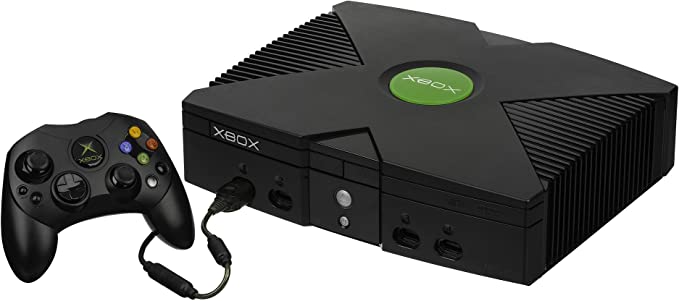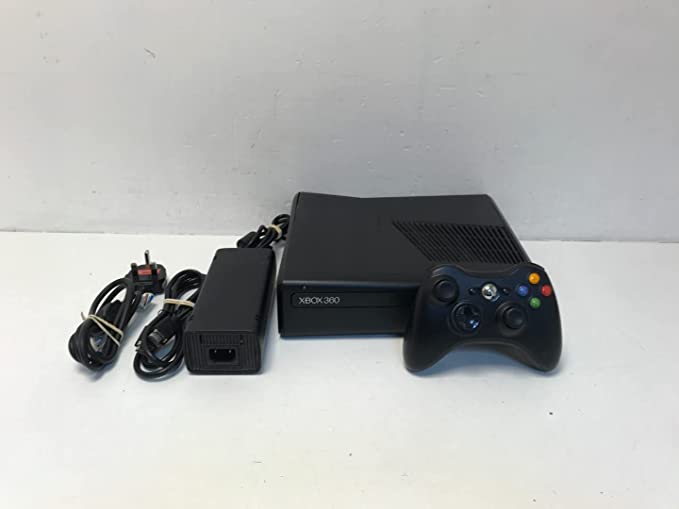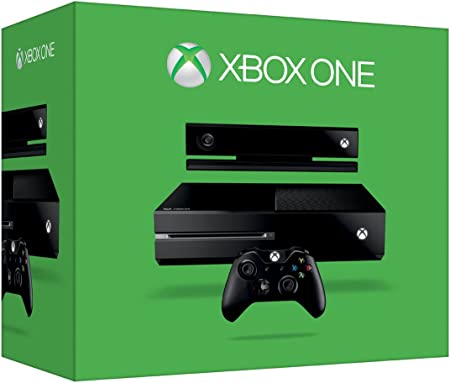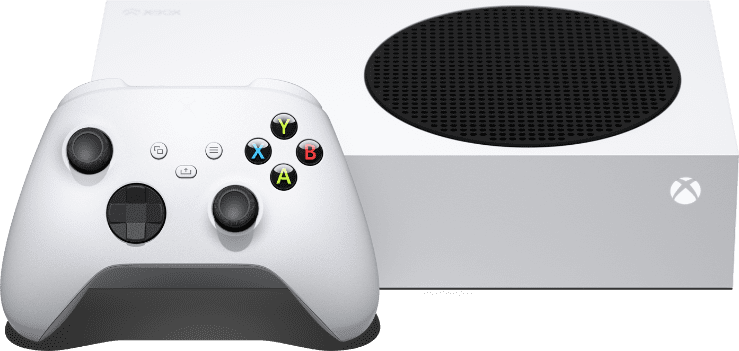You can trust VideoGamer. Our team of gaming experts spend hours testing and reviewing the latest games, to ensure you're reading the most comprehensive guide possible. Rest assured, all imagery and advice is unique and original. Check out how we test and review games here
- Xbox – 15th November 2001.
- Xbox 360 – 22nd November 2005.
- Xbox 360 S – 22nd November 2005.
- Xbox 360 E – 10th June 2013.
- Xbox One – 22nd November 2013.
- Xbox One S – 2nd August 2016.
- Xbox One X – 7th November 2017.
- Xbox Series X – 10th November 2020.
- Xbox Series S – 10th November 2020.
The Xbox console journey first started more than 20 years ago. Microsoft, primarily a software company back in the early 2000s, moved into the gaming console business in the early 2000s and has since become one most dominant consoles on the market.
While the latest iteration, the Xbox Series X, has struggled against Sony’s offering, the PlayStation 5, in terms of sales, The Xbox player base is still strong. This is helped by the fact that Xbox has been fiercely protective of their IPs, including Gears of War and Halo. However, this could all be changing in the future, with boss Phil Spencer revealing that Xbox exclusives may come to other consoles.
List of Xbox models timeline
There are a total of nine main models that have been released so far, and they belong to a total of four different console generations. Below is a list of all the models released since the first launch in 2001:
- Xbox (15th November 2001)
- Xbox 360 (22nd November 2005)
- Xbox 360 S (22nd November 2005)
- Xbox 360 E (10th June 2013)
- Xbox One (22nd November 2013)
- Xbox One S (2nd August 2016)
- Xbox One X (7th November 2017)
- Xbox Series X (10th November 2020)
- Xbox Series S (10th November 2020)
Let’s look at each Xbox, and the impact on the gaming scene their release had in their respective generations.
First Generation Xbox
This was the first generation of Xbox and is only comprised of a singular console. This console was late to the party as the global generation of consoles had reached its 6th iteration. Microsoft had a lot of catching up to do, and this was their attempt to take the market by storm.
Xbox (2001)

The first generation of Xbox was released during the sixth generation of consoles. It was released during the era when it had to compete with the Sony PlayStation 2 and the Nintendo GameCube.
| Xbox 2001 | Details and Specs |
|---|---|
| Generation | First Gen |
| Release Date | November 15th 2001 |
| Status | Discontinued, 2009 |
| Units Sold | 24+ million worldwide |
| Release Price | $299 |
| CPU | Intel Pentium III (733 MHz) |
| GPU | NVIDIA NV2A (233 MHz) |
| Memory | 64 MB DDR SDRAM |
| Hard Drive | 8 GB HDD |
| Optical Drive | CD Rom/DVD Rom |
The Xbox was released in 2001 in a wildly competitive market, with many wondering if it would be able to stand alongside the behemoths of the console industry. While unable to beat the PlayStation 2, it still handily waved away these doubts by selling 1.5 million units before the end of 2001, proving itself to be a viable competitor.
This was aided by the console’s flagship gaming titles and some handy exclusive deals that Microsoft had secured. These exclusives included extremely popular games such as Star Wars: Knights Of The Old Republic, Tom Clancy’s Splinter Cell, and of course, Halo. Halo was a breakout star for the Xbox 2001.
One of the standout features of the original Xbox was the now legendary Duke controller. It was called the Duke due to its imposing size, so much so that MSFT eventually ended up releasing a smaller version.
The Halo franchise served as an excellent game and, consequently, a reliable method to promote Microsoft’s live online gaming service, Xbox Live. Halo is a first-person shooter game set in a futuristic setting and features a compelling story mode and a highly competitive and fun online scene. The popularity and reliability of Xbox Live helped set the console apart from its competitors.
Second Generation Xbox 360/S/E
The Second Generation of Xbox was made up of consoles titled Xbox 360 and its multiple variants. These primarily competed with Sony’s PlayStation 3. Many consider this the defining generation for the consoles.
Xbox 360 (2005)

By the time of the release of the Xbox 360 in 2005, the console had already made itself a household name. With Sega out of the picture, Sony, Nintendo, and Microsoft clashed to secure the largest market share in the console space.
| Xbox 360 | Details and Specs |
|---|---|
| Generation | Second Gen |
| Release Date | November 22, 2005 |
| Status | Discontinued |
| Units Sold | 85.8+ million units worldwide |
| Release Price | $399 |
| CPU | Microsoft XCPU 500 MHz – 3 Cores |
| GPU | R500, Xenos chip(ATI) – 500 MHz |
| Memory | 512 MB GDDR3 RAM |
| Hard Drive | 250 GB HDD |
| Optical Drive | 12x DVD |
| Video Output | VGA(Original), HDMI(Later Releases) |
The Xbox 360 made some major upgrades to the original model and maintained a loyal fanbase. This model of the Xbox went toe to toe with Sony’s PlayStation 3 and kept a roughly equal market share.
The Xbox 360 once again had a variety of very popular exclusive titles that helped it keep a large and dedicated fan base. These games included Gears of War, Dead Rising, and other breakout titles for this generation of consoles.
The Xbox 360 once again had a variety of very popular exclusive titles
One of the ways this series managed to maintain its popularity is through the use of add-ons and upgrades to the Xbox Live service. The Kinect was a motion capture gaming peripheral that boosted the console’s popularity to new heights.
However, the console still faced many hardware and software limitations, such as the notorious Red Ring of Death which was rectified in later iterations of the model.
Xbox 360 S (2010)

The Xbox 360 S was a direct upgrade to the Xbox 360 and is the second console released in the second generation of models.
| Xbox 360 S | Details and Specs |
|---|---|
| Generation | Second Gen |
| Release Date | June 14, 2010 |
| Status | Discontinued |
| Units Sold | 85.8 million units |
| Release Price | $299 |
| CPU/ GPU | Custom ATI single chip |
| Memory | 512 MB of GDDR3 RAM |
| Hard Drive | 250 GB HDD |
| Optical Drive | DVD |
| Video Output | HDMI 1.2a in/out |
The Xbox 360 S was released in 2010 and provided several upgrades to the original both in terms of hardware and design.
The design had been changed, going for a more sleek and slim look with a shiny glossy finish rather than the simple matte. They reduced the brick size, and the buttons were changed to a touch-sensitive model, giving the console a modern feel.
The hardware and software were upgraded to meet the requirements of the latest games. Microsoft also learned from its mistakes and fixed the bugs and errors that had plagued the previous model. These changes provided players with a very convenient and stable gaming experience.
Xbox 360 E (2013)

This was the third and final console released in the second generation and was marketed toward players who did not want to spend on the upcoming Xbox One.
| Xbox 360 E | Details and Specs |
|---|---|
| Generation | Second Gen |
| Release Date | June 10, 2013 |
| Status | Discontinued |
| Units Sold | 85.8 million units |
| Release Price | $199 |
| CPU | IBM custom Xenon – tri-core |
| GPU | ATI Xenos – 10 MB eDRAM |
| Memory | 512 MB GDDR3 RAM |
| Hard Drive | 250 GB HDD 2.5′ SATA |
| Optical Drive | HD DVD |
| Video Output | HDMI, Up to 1080p |
The Xbox 360 E ran only for the three twilight years in the second generation of Xbox consoles and did not make any significant strides in performance. It introduced a newer design that would become standard as newer models were released.
The design returned to the matte finish of older consoles, and the touch button was minimized. They also finally removed the AV video plugin swapping to pure HDMI support as Microsoft prepared to enter the next generation of gaming consoles.
Third Generation Xbox One/S/X
The Third Generation of Xbox consoles was mainly titled the Xbox One. These pieces of hardware brought console gaming to the 4K level with the latest specs. This generation has the highest degree of performance gaps between its variants and is also the generation where Microsoft decided to part ways with the Kinect system.
Xbox One (2013)

The Xbox One released on 22nd November 2013 and was Microsoft’s attempt at competing with their rival Sony, who was set to release the PlayStation 4 around this same time.
| Xbox One | Details and Specs |
|---|---|
| Generation | Third Gen |
| Release Date | November 22, 2013 |
| Status | Discontinued |
| Units Sold | 58.5 million units approx. |
| Release Price | $499 |
| CPU | AMD Octa-Core APU – 1.75 GHz |
| GPU | AMD Radeon GCN, 853 MHz |
| Memory | 8 GB DDR3 |
| Hard Drive | 500 GB HDD |
| Optical Drive | Blu-Ray/DVD |
| Video Output | HDMI 1.4 in/out, 4K support |
The Xbox One was a fairly decent bargain and came in two options priced $100 apart, with or without Kinect. Microsoft tried to emphasise the use of the Kinect system and its integration with your home TV systems. Unfortunately, this did not pan out so well. The idea of having an ‘entertainment system’ rather than a dedicated console just did not resonate with an audience.
Most people flocked to Sony’s PlayStation 4 due to the cheaper cost and a large number of exclusive titles. Also, some people had privacy concerns regarding the Kinect system and its implementation. The Kinect would eventually be discontinued due to its lack of popularity.
Limited backward compatibility was also an issue that many players struggled with, as they did not wish to re-purchase older titles that they already owned. According to Microsoft, the Xbox One only managed to make half of its estimated target sales.
Xbox One S (2016)

After the underwhelming release of the Xbox One, Microsoft decided to up their game and introduced upscaled 4k graphics to compete in the modern gaming platform market.
| Xbox One S | Details and Specs |
|---|---|
| Generation | Third Gen |
| Release Date | August 2, 2016 |
| Status | Discontinued |
| Units Sold | 58 million units approx. |
| Release Price | $299 |
| CPU | AMD 8-core APU (2 quad-core Jaguar modules) |
| GPU | AMD Radeon 914 MHz |
| Memory | 8 GB DDR3 |
| Hard Drive | 1TB HDD |
| Optical Drive | UHD Blu-ray, DVD |
| Video Output | HDMI 2.0 in/out, 4K support |
While it was merely upscaled to 4K and did not provide the authentic 4K experience, many players were impressed at the console’s display capability, which was able to outperform competitors at a similar markup price.
Not only this, but they also added 4k Blu-Ray capabilities to the device to help it feel like much more than just a gaming console. They tried to fit as many home utility functionalities into the device as possible to make it a device that could serve as a hub for all TV-related activities.
They tried to fit as many home utility functionalities into the device as possible
The console size was shrunk, and it turned into a much lighter and more compact device than ever before. They swapped the design back to the old nostalgic white and made minor adjustments to the iconic Xbox controller design.
Xbox One X (2017)

The Xbox One X was Microsoft’s true leap into the 4K gaming experience as consoles finally caught up with PCs in providing 4K graphics at 60fps.
| Xbox One X | Details and Specs |
|---|---|
| Generation | Third Gen |
| Release Date | November 7, 2017 |
| Status | Discontinued |
| Units Sold | TBC |
| Release Price | $499 |
| CPU | AMD 8-core APU – 2.3 GHz |
| GPU | AMD Radeon GCN architecture 1.172 GHz |
| Memory | 12 GB GDDR5 |
| Hard Drive | 2TB HDD |
| Optical Drive | UHD Blu-ray, DVD |
| Video Output | HDMI 2.0b in/out, 4K support |
The Xbox One X was a beast when it came to performance compared to all previous consoles. The console was extremely popular with people who were enthusiastic about experiencing 4K. It could provide all that value while running the same software that previous Xbox models were using.
The backward compatibility features were also greatly improved here, with players being able to return to older titles and experience them in a much bolder and high-resolution display like ever before.
The design was also changed once more for a sleek black design with a shiny finish and a brand-new look similar to the ones used by PlayStation models. While this model’s runtime lasted only three years, it still managed to showcase that Microsoft was still in the console race and was still a very solid competitor for Sony’s PlayStation.
Fourth Generation Xbox Series X/S
The Fourth generation is the latest instalment of the Xbox console generation and is still going strong, with two different console variants already launched. These consoles have received the biggest jump in performance out of any prior generation and are both powerhouses when it comes to performance.
Xbox Series X (2020)

With the new Xbox Series models, Microsoft aims to compete directly with Sony’s PlayStation 5.
| Xbox Series X | Details and Specs |
|---|---|
| Generation | Fourth Gen |
| Release Date | November 10, 2020 |
| Status | Ongoing |
| Units Sold | Estimated 3.14 million (2023) |
| Release Price | $499 |
| CPU | 3.8 GHz custom AMD Zen 2 (8 core) |
| GPU | 1825 MHz AMD Custom RDNA 2 |
| Memory | 16 GB GDDR6 |
| Hard Drive | 1TB |
| Media | CD, DVD, Blu-Ray, 4K UHD |
| Video Output | HDMI (up to 8K support) |
The Xbox Series X enjoyed immense success and popularity compared to the Xbox One. Part of this is due to market shortages and PlayStation 5 scalping. These market issues made the Xbox Series X an ideal alternative for people to flock towards.
With performance that is considered 8k-ready and performance at 120fps for most games, it’s no understatement to call this console a beast that can rival even the most expensive gaming PCs at a much more affordable price. The performance gap between the Xbox One and the Xbox Series X is almost doubled as well.
Microsoft opted for a much different look for the Xbox Series X as it resembles a black tower with vents similar to the look you would get from a standing PC Tower. It’s bulkier in size and weight, but that is a small sacrifice to make for such advanced performance capabilities.
Xbox Series S (2020)

The Xbox Series S was released as a sibling console for the Xbox Series X and is supposed to provide a lighter and more compact experience at a much more affordable price.
| Xbox Series S | Details and Specs |
|---|---|
| Generation | Fourth Gen |
| Release Date | November 10, 2020 |
| Status | Ongoing |
| Release Price | $299 |
| CPU | 3.6 GHz custom AMD Zen 2 (8 core) |
| GPU | 1550 MHz AMD Custom RDNA 2 |
| Memory | 10 GB GDDR6 |
| Hard Drive | 500GB |
| Video Output | HDMI (1440p support) |
The Xbox Series S, as mentioned earlier, is slightly weaker on the hardware side. It can provide a 120fps resolution for most games but only up to 1440p and not 4K. Many features were removed to fit the console’s design.
The Series S comes in a smaller, lightweight body with a clean white finish. The device is well-built and easy to transport around with for on-the-go gaming needs. It’s comparable to a pre-built gaming PC in terms of performance but with portability in mind.

